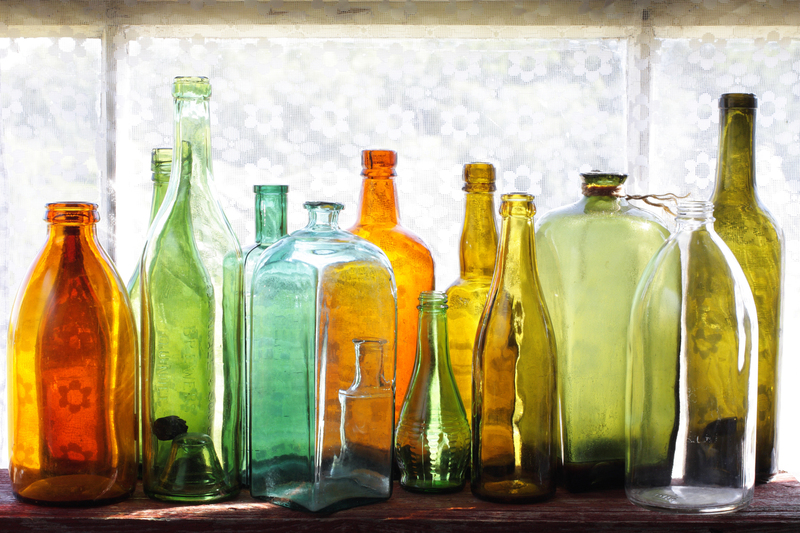Turning the Tide on Microplastic Pollution: Is There Hope?
In recent years, microplastic pollution has come into the global spotlight as one of the greatest environmental challenges of our age. Tiny plastic particles, invisible to the naked eye, have infiltrated every ecosystem on Earth, from the deepest ocean trenches to the highest mountain peaks. As concern over the consequences of microplastics contamination mounts, many are asking: Is there hope for reversing or mitigating this crisis?
Understanding the Scope of Microplastic Pollution
What Are Microplastics?
Microplastics are small plastic fragments, typically less than 5 millimeters in diameter, that result from the breakdown of larger plastic debris or are manufactured as small particles (such as microbeads). They can be found in countless consumer products, from cosmetics to cleaning agents, and arise from the wear and tear of synthetic textiles and tires.
- Primary microplastics: manufactured tiny plastic pellets or beads found in personal care products, detergents, and industrial processes.
- Secondary microplastics: derived from the degradation of larger plastic items such as bottles, bags, and fishing nets.
Where Do Microplastics Come From?
The sources of microplastics pollution are manifold. Major contributors include:
- Synthetic fibers shed during laundry
- Fragmentation of plastic waste in landfills and the environment
- Industrial activities and urban runoff
- Abrasion of car tires on roads
- Personal care products with microbeads
Global Distribution and Impact
Microplastics are omnipresent. They have been discovered in ocean water, freshwater systems, soils, and even in the air we breathe. Studies have found microplastic contamination on the most isolated islands, in Arctic ice, and at the bottom of the Mariana Trench. This pervasive spread poses risks to wildlife, ecosystems, and potentially human health.

Why Microplastic Pollution Is A Serious Concern
Impact on Marine and Terrestrial Life
The ingestion of microplastics by marine organisms is widely documented. Fish, seabirds, and filter-feeding creatures mistake these particles for food, often leading to physical blockages, malnutrition, or exposure to toxic chemicals adhered to plastic surfaces. Terrestrial organisms are not immune, with particles entering soil food webs and even being consumed by earthworms, insects, and birds.
Potential Human Health Risks
Humans are exposed to microplastic contaminants through seafood, drinking water, and even the air. While the long-term health effects are still under investigation, there is growing concern about chronic exposure, especially as some microplastics contain or absorb harmful chemicals like phthalates, PCBs, and heavy metals.
Key health concerns include:
- Inflammation and cellular damage from particle ingestion
- Translocation of microplastics into tissues and organs
- Potential hormonal disruption from plastic additives
- Unknown long-term effects with chronic exposure
Microplastics in Food and Water
Research has detected microplastics in bottled and tap water, beer, salt, honey, and a variety of seafood. Estimates suggest that the average person may consume tens of thousands of microplastic particles each year, although the precise impact remains unclear.
Efforts to Tackle Microplastic Pollution: A Global Response
International Regulations and Bans
Policy efforts are ramping up worldwide to curb microplastic inputs:
- Many countries have banned microbeads in cosmetics and personal care products
- The European Union is working towards restricting intentionally added microplastics in products
- UN Environment Programme (UNEP) has launched initiatives to reduce plastic litter and microplastics
However, regulatory frameworks vary greatly, and enforcement can be challenging, especially in low-income regions.
Innovation in Wastewater Treatment
Since many microplastics enter the environment via water systems, wastewater treatment plants are a critical point of intervention. Advanced filtration systems, such as membrane bioreactors, sand filtration, and dissolved air flotation, are being adopted to remove microplastics from sewage before it reaches rivers and oceans. However, fibers and very small particles often escape even advanced facilities, necessitating further technological improvement.
Cleaner Production and Alternative Materials
Companies are investing in biodegradable plastics, alternative materials, and sustainable packaging. Consumer pressure and changing regulations are encouraging brands to phase out single-use plastics and improve product recyclability.
- Use of natural fibers instead of synthetics in textiles
- Promotion of refillable and reusable packaging
- Development of biopolymers that break down harmlessly
Scientific Research and Citizen Science
Research into microplastics pollution is expanding rapidly. Scientists are developing standardized measurement techniques, investigating impacts on health and environment, and seeking ways to detoxify or remove plastics from ecosystems. Citizen science campaigns encourage individuals and communities to monitor local water sources and beaches for plastic particles, raising awareness and generating valuable data.
Promising Technologies and Solutions
Microplastic Removal in the Ocean
While removing microplastics already dispersed in the vast oceans is a formidable challenge, several technological innovations offer hope:
- Floating booms and barriers designed to collect plastic fragments on ocean surfaces
- Specialized filtration devices mounted on boats or at river mouths
- Bioremediation using plastic-eating bacteria or enzymes
For example, a startup in the Netherlands is testing "bubble barriers," where a curtain of air bubbles captures plastic debris--including microplastics--in rivers, making extraction easier.
Filtration Innovations for Urban Runoff and Laundry
One of the largest sources of microplastic fibers is the laundering of synthetic clothes. Promising inventions include:
- Washing machine filters that trap fibers before they enter wastewater systems
- Aftermarket laundry bags and balls that capture fibers during washing
- Filters for stormwater drains to intercept urban plastic fragments
Advances in Biodegradable Materials
The development of biodegradable bioplastics that fully break down in real-world conditions is an ongoing research priority. While existing compostable plastics require industrial facilities for proper degradation, new materials are emerging that are safer and less persistent in the environment.
Individual and Collective Action: What Can You Do?
Reducing Personal Microplastic Footprint
While systemic change is essential, individuals can play a role in limiting microplastics release:
- Choose natural fabrics over synthetic fibers when purchasing clothes
- Install a washing machine filter or use microfiber capture bags
- Avoid personal care products with microbeads
- Reduce overall single-use plastic consumption
- Participate in local clean-up days and support plastic-free initiatives
Advocacy and Education
Spreading awareness and supporting science-based policies can accelerate progress against microplastic pollution. Educating others about the issue, supporting bans on harmful products, and advocating for better waste management systems are impactful steps.
Supporting Innovation and Responsible Brands
By purchasing from brands committed to sustainable practices and avoiding products with unnecessary plastic, consumers send a strong signal to the marketplace. Encouraging innovation--from laundry filters to alternative packaging--can amplify the impact.
Challenges in Overcoming Microplastic Pollution
The Difficulties of Microplastic Detection and Removal
Detecting microplastics, especially those less than 1mm, is technically challenging and resource-intensive. Removal from dispersed environments (like oceans, soil, and air) is, as yet, largely impossible on a meaningful scale. Preventing pollution at the source remains the most effective strategy.
Lack of Comprehensive Regulation
With plastic production projected to rise, and regulatory control lagging behind, international coordination is vital. Stopping microplastic pollution at the source requires cohesive policies across nations, robust enforcement, and rapid adoption of alternative materials.
Knowledge Gaps
While evidence of environmental harm is mounting, more research is needed to fully understand the long-term effects of chronic microplastics exposure on human health and ecosystems. Standardized methods for measuring and assessing microplastics contamination across environments would enable more effective interventions.

Signs of Hope: Success Stories and Future Directions
Policy and Corporate Commitment Gaining Momentum
The number of countries enacting bans or restrictions on microplastic sources continues to grow. Leading companies are pledging to phase out single-use plastics, invest in safer materials, and support ecosystem restoration.
Youth Movements and Public Awareness
Public awareness of microplastic pollution is at an all-time high. Youth organizations and environmental groups are pushing for changes at local, national, and international levels. Media attention and viral campaigns have made microplastics a key issue, putting pressure on policymakers and industry.
Groundbreaking Research
The speed of scientific progress in understanding, detecting, and finding solutions for microplastic pollution is unprecedented. From gene-edited bacteria that break down plastics to new filtration techniques and advanced material science, the future holds promise for innovation-led mitigation.
Conclusion: Is It Possible to Reverse Microplastic Pollution?
The journey to reverse microplastic pollution is complex, requiring global cooperation, coordinated policies, technological innovation, and a fundamental rethinking of our relationship with plastics. While there are no instant solutions, the tide is turning, with growing recognition of the problem, expanding research, and real momentum for change.
There is hope--provided we continue to act urgently, invest in new technologies, and support policies and practices that prioritize the health of our planet and ourselves.
By combining individual responsibility with collective action, fostering innovation, and demanding a circular, sustainable economy, we can begin to turn the tide on microplastic pollution. The challenge is immense, but the stakes could not be higher--for the Earth's ecosystems, and for future generations.
```


